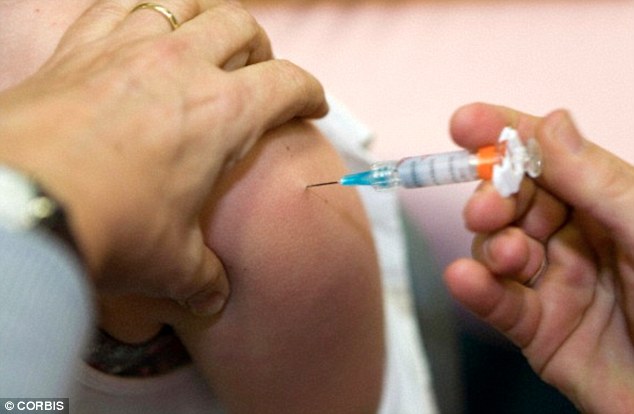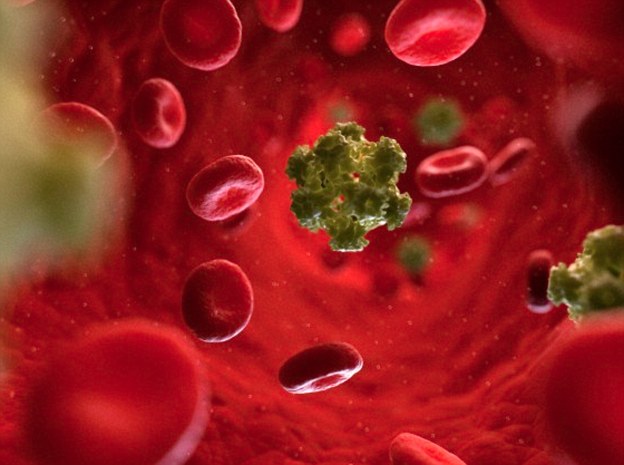Oral sex ‘raises the risk of getting cancer by 22 times’
- Researchers believe oral sex is the main way HPV ends up in the mouth
- The virus affects the skin and moist membranes which line the body
- HPV causes changes in the cells it has infected which can lead to cancer
- 500,000 people worldwide are diagnosed with oral cancers every year
236
View comments

Oral sex dramatically increases the risk of throat cancer, a new study has found (file photo)
Oral sex dramatically increases the risk of head and neck cancers, a new study has claimed.
The disease has traditionally been considered to be one that affects smokers and heavy drinkers in later life.
But over recent years, as cases have been rising, it has been linked with the common human papillomavirus (HPV).
It is believed oral sex may be the main way HPV – more usually associated with cervical cancer – ends up in the mouth.
The group of viruses affect the skin and moist membranes which line the body, including the anus, cervix and mouth and throat.
HPV-16 is a well-known cause of oropharyngeal tumours – those which affect the middle part of the throat including the soft palate, the base of the tongue and the tonsils.
While HPV does not directly trigger cancer, it causes changes in the cells it has infected (for example, in the throat or cervix), and these cells can then become cancerous.
Men are twice as likely to get oropharyngeal cancer as women, according to NHS choices, because performing cunnilingus is more risky than fellatio.
It is the 11th most common cancer worldwide, according to World Health Organisation figures.
Worldwide almost half-a-million patients a year will be diagnosed with oral and oropharyngeal cancer.
More than two thirds of cases are diagnosed in advanced stages where the cancer has already spread to regional lymph nodes or beyond, the global oral cancer forum reports.
Approximately 150,000 patients die each year and many more suffer from the complications of treatment.
While girls in the UK aged 12-13 are offered a vaccination to help protect them against types of HPV that can cause cervical cancer, there is no immunisation programme for boys.
An official recommendation on whether to offer the HPV vaccine to all adolescent boys is expected in early 2017.
This new study, published in the journal JAMA Oncology, is the first to show conclusively that HPV-16’s presence in the mouth leads to the development of oropharyngeal cancer.
This follows a study in The New England Journal of Medicine which showed that those infected with HPV were 32 times more likely to develop oral or throat cancers.
And previous research published in the Journal of Clinical Oncology found HPV now accounts for more head and neck cancers than tobacco or alcohol.
Spread by skin-to-skin contact, not just by sex, HPV affects almost everyone at some stage in their life.
In most people, the immune system fights it off and it does no harm.
But on rare occasions, the virus takes hold, leading to a chain of events that ends in cancer of the cervix, penis, anus, vagina or mouth.
Around 15 strains can cause cervical cancer – and HPV-16 is the most common.
The most dangerous HPV’s, 16 and 18, which are transmitted through sexual contact are known to cause up to 95 per cent of cervical cancers.
Now these two HPV’s are also being linked to oral cancer.
A different study done by Dr No-Hee Park, a leading expert in head and neck cancers at UCLA, showed that the mouth was, at the cellular level, structurally very similar to the vagina and cervix.
Both organs have the same type of epithelial cells that are the target of HPV 16 and HPV 18.
The majority of oral cancers are cancers of epithelial cells, primarily squamous cell carcinomas, not unlike the cancers that affect the cervix.
Dr Park’s study also showed that smoking and drinking alcohol help promote HPV invasion.

Actor Michael Douglas (left with wife Catherine Zeta Jones), the star of Basic Instinct and Fatal Attraction, was diagnosed with oropharyngeal cancer in 2013
Combine tobacco and alcohol with HPV, and the epithelial cells in the mouth, and you may have the formula for the development of an oral cancer.
The new research, carried out at Albert Einstein College of Medicine in New York, suggested people carrying the virus in their mouth were an alarming 22 times more likely to develop a potentially lethal tumour.
The finding was based on almost 97,000 people who provided mouthwash samples and were cancer-free at the beginning of the project.
They were followed for an average of four years, during which time a total of 132 cases of head and neck cancer were identified.
The study participants were compared with 396 healthy people who acted as controls.
Mouthwash samples were analysed for the presence of several types of oral HPVs in both groups.
These revealed people with HPV-16 in their mouthwash were 22 times more likely to develop oropharyngeal cancer (oropharynx is the part of the throat directly behind the mouth) than were those with no detectable trace of the virus HPV-16 in their samples.
In addition, the researchers found for the first time that the presence of other types of oral HPVs, known as beta and gamma, which are usually detected in the skin, were also associated with the development of head and neck cancers.
This indicated a broader role for HPVs in causing these cancers than has been recognised to date.
Dr Ilir Agalliu, of the Albert Einstein College of Medicine, New York, said: ‘This study shows using easily collected oral mouthwash samples may help in predicting people’s risk for developing head and neck cancers.’
Cases of oral cancer have increased over the past 30 years.
Oropharyngeal cancer is the type that affected actor Michael Douglas.
In a June 2013, the Fatal Attraction star seemed to indicate his disease was brought on by human papillomavirus (HPV), contracted through cunnilingus.
His rep later denied that he was pinpointing the cause of his own cancer and merely stating one of the many causes of oral cancer, which include smoking and drinking.
However he beat the odds by recovering from a tumour categorised as stage 4, which often is terminal.
Commenting on the new study, Dr Nigel Carter, chief executive of the British Dental Health Foundation, said: ‘HPV-related cancers have rapidly increased over the last few years.

Girls in the UK have been getting the HPV vaccination since 2008 while the latest research is certain to reignite calls for boys to be given it as well
‘Early detection of mouth cancer dramatically improves the chances of survival from 50 to 90 per cent – so it’s extremely important to be on the lookout for any signs and symptoms which could be related to the disease.’
He added: ‘Be alert to mouth ulcers which do not heal within three weeks, red or white patches in the mouth and any unusual swellings or lumps in the head or neck area, and if you spot anything unusual to get examined straight away.
‘Your dentist will check for signs of mouth cancer during your regular check-up so it is important that you visit your dentist regularly to catch any signs which you may miss yourself.’
Dr Jana Witt, Cancer Research UK’s health information officer, said the work added to a growing body of evidence but said it was important to stress the risk was low.
‘It’s already established that the human papillomavirus (HPV) is linked to some types of mouth and throat cancer and this research adds an important part to that evidence – showing that having an HPV infection leads to a higher risk of developing one of these cancers later on in life,’ she said.
‘But the study wasn’t able to give a very accurate estimate for how much the risk of oropharyngeal cancer, which affects part of the throat, was increased and it’s far from certain that the risk would be 22 times higher.
‘Previous research has shown that oral sex can raise the risk of mouth and throat cancers because it can spread HPV, but it’s important to remember that the chance of developing cancer if you have oral sex is still low.
‘Not smoking, cutting down on alcohol and getting plenty of fruit and veg are all good ways to cut the risk of these cancers.’
The research, carried out by Albert Einstein College of Medicine in New York, suggested that oral sex is the main way HPV ends up in the mouth. Oral cancer is the 11th most common worldwide.
Source: Albert Einstein College of Medicine say oral sex raises cancer risk by 22 times | Daily Mail Online
 Revealed… the 10 common condom mistakes that could leave…
Revealed… the 10 common condom mistakes that could leave…  He has stopped Adele and Ewan Mcgregor smoking but can he…
He has stopped Adele and Ewan Mcgregor smoking but can he…  Are beards GOOD for your health? Yes! Huge variety of…
Are beards GOOD for your health? Yes! Huge variety of…  Why menopause can bring migraine misery for women: Hormone…
Why menopause can bring migraine misery for women: Hormone… 